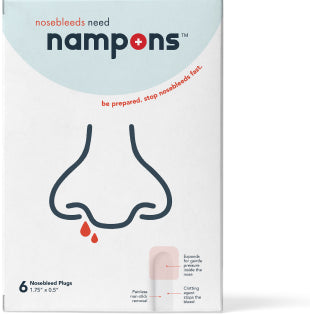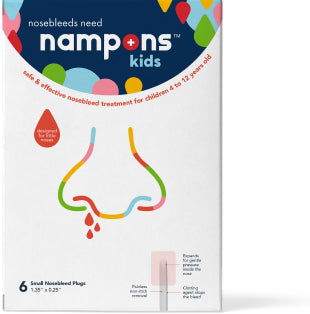This article was written by Dr. Drew Sutton, a retired ENT doctor who lives in the Southeastern US. During his 30 year career, he was an American Academy of Otolaryngology member and a Fellow of the American College of Surgeons.
There are plenty of resources about how to treat nosebleeds at home, but few about how an ENT really thinks about nosebleeds. It is difficult to avoid anxiety and apprehension. No one likes the sight of blood, particularly from the most prominent part of our face.
Bleeding is a relative term. It can be both a sign and/or symptom. Some people describe bleeding as merely seeing blood. Others define it as when blood is actively flowing. Still, others only call it bleeding when it cannot be stopped by conservative measures. All of these definitions deserve comment.
Key Takeaways
- Nosebleeds should be taken seriously as a potential sign or symptom of another medical condition
- Defining how severe a nosebleed may be subjective, but the management should be objective
- Ice, elevation, and compression remain the proven initial treatment for most cases of nosebleeds
Seeing blood in or around the nose
For most people, the occasional spot of blood around the nose is ignored. It may be a result of nasal dryness, picking, or irritation. The drop of blood is just that, a drop.
The best way to handle this situation is not to ignore it, but to figure out why it is happening. Using nasal saline or an aqueous ointment can solve the problem. It is usually a sign that something is wrong in the lining of the nose, not a symptom of a worse problem.
The exception may be someone suffering from allergic or non-allergic rhinitis. That tiny amount of blood may be a reason to investigate whether you have allergies or seasonal nasal symptoms. The irritation to your nose may be causing you to rub it, pick it, or the lining is just dry and irritated.
Surprisingly, the treatment for that drop of blood in the nose may not be doing anything to the nose at all, and taking an antihistamine or allergy treatment. Or, the blood may be a result of using or overusing over-the-counter nasal sprays which may be the cause of the irritation.
Blood is actively coming out of the nose
First, the severity of the bleeding has to be assessed. This is a subjective measurement.
There are specific reasons that a person may be suffering from a nosebleed. The best course of action, besides stopping the bleeding itself, is to determine the etiology of the nosebleed.
Seems like an awful lot of blood
Most casual observers are so startled by the sight of blood that the amount of bleeding may be overestimated. A good example is bleeding as a result of nasal trauma such as being hit by a baseball or basketball.
While the bleeding is impressive to start, it usually settles down quickly with some pressure and ice. Sometimes, placing a temporary light packing such as a nampon with a gentle hypoallergenic clotting agent may be very useful.
The nosebleed is not that bad
On the flip side, the amount of bleeding may be underestimated which can be worse. Bleeding may be occurring intermittently and be a result of a chronic problem such as rhinitis or a sinus infection or the overuse of blood thinners such as a daily preventative aspirin.
In some cases, a nosebleed may be a symptom of severely elevated blood pressure. It may not have much to do with a problem with the nose at all. Before tackling the nosebleed, it is important to get the person’s blood pressure under adequate control. No amount of compression, packing, or ice may be helpful until the person’s blood pressure returns to normal.
In rare cases, this underestimation may be caused by a congenital defect known as Osler Weber Rendu disease. These patients become overly and dangerously indifferent to excessive nosebleeds. They can suffer from various medical issues including anemia from continual blood loss.
Even in the case of tolerance of intermittent nosebleeds from whatever the cause, there are good temporary measures such as using nampons until further medical evaluation and management can be undertaken.
The nosebleed is relentless
These are the situations of concern. These patients have passed the point of worrying whether the bleeding is too much or too little.
There are several temporizing measures that are helpful including placing pressure on both the sides of the nose or bridge. Sitting upright or propping the person’s head up are good ways to prevent the blood from draining down the person’s throat which can heighten anxiety, and cause choking, nausea, and vomiting.
One trick may be to use an over-the-counter nasal decongestant such as oxymetazoline or Afrin or Neo-Synephrine nasal spray. No doubt this is a messy endeavor and does not always get results since the medication may fail to reach the desired areas in the nose.
Ice the bridge of the nose and compression is mandatory. Again, using a product that provides intranasal compression and an anticoagulant such as a nampon may be a good way to either stop or slow the bleeding until further help can be obtained. It is a far better option and a rolled-up tissue or cotton which can make the bleeding worse.
A vicious cycle can develop with relentless nosebleeding causing anxiety, continued bleeding, and a sense of hopelessness. There is a fine line between trying to figure out the cause of the excessive bleeding and doing something to help.
No one who has a horrible nosebleed wants to know if their blood pressure is too high, the bleeding is a result of medications they are taking, or the bleeding is indicative of some other serious medical condition. They just want help and throughout my career, I could never blame them.
Things to consider
Nosebleeds can happen to everyone at various times. Most occur in the front or anterior portion of the nose and can be managed with minimal conservative measures. Posterior nosebleeds are considered a medical emergency and fortunately are uncommon.
Most of these nosebleeds are a result of irritation or trauma to a specialized area in the cartilage in the nasal septum known as “Kiesselbach Plexus.” The nasal septum consists of cartilage in the front and bone in the back. The juncture between the cartilage and bone can set up areas of dryness and irritation.
Aside from determining the origin of the nosebleed, treatment typically centers on dealing with blood vessels in Kiesselbach Plexus. Some may resort to topical medication or ice to make the blood vessels shrink. Others may need to have the blood vessels sealed by either electrical or chemical cauterization. All or some of these measures are not available at all times.
Lastly, compression of the blood vessels is highly effective. This can be accomplished with simple pinching or placing a compressive agent such as a nampon in the nose. The compressive packing will have the added benefit of introducing a clotting medication, a highly effective tool.
Dr. Drew Sutton, MD FACS
Drew Sutton is a retired ENT doctor who lives in the Southeastern US. During his career, he was an American Academy of Otolaryngology member and a Fellow of the American College of Surgeons. He earned his bachelor’s degrees in biology and psychology from Rice University and an MD from the University of Rochester. In addition, he completed his internship in General Surgery and Residency in Otolaryngology-Head and Neck Surgery at the University of Rochester.
For 30 years, Dr. Sutton practiced in all aspects of ENT, including specializing in nasal and sinus disorders. He is passionate about communicating his clinical experiences and making his knowledge more accessible to the general public.



